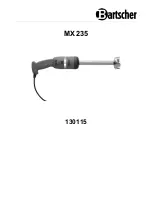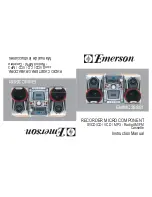
Owner’
s Manual
13
Owner’s Manual
5. LOW CUT (Channels 1–3)
Each low-cut switch, often referred to as a high-pass
filter (all depends on how you look at it), cuts bass fre-
quencies below 100 Hz at a rate of 18 dB per octave.
We recommend that you use low-cut on every micro-
phone application except kick drum, bass guitar, or
bassy synth patches. These aside, there isn’t much down
there that you want to hear, and filtering it out makes
the low stuff you do want much more crisp and tasty.
Not only that, but low-cut can help reduce the possibili-
ty of feedback in live situations, and it helps to conserve
amplifier power.
Another way to consider low-cut’s function is that it
actually adds flexibility during live performances. With
the addition of low-cut, you can safely use low equaliza-
tion on vocals. Many times, bass shelving EQ can really
benefit voices. Trouble is, adding low EQ also boosts
stage rumble, mic handling clunks and breath pops.
Applying low-cut removes all those problems, so you can
add low EQ without losing a woofer.
6. INSTRUMENT SWITCH (Channels 1–2)
Press these in if you want to connect a guitar or other
instrument-level source directly to the line inputs of
channels 1 and 2. You will not need a DI box, and your
guitar will perform flawlessly (well, as long as your play-
ing is that way).
7. GAIN (Channels 1–3)
If you haven’t already, please read the
level-setting procedure on page 3.
The gain knobs for channels 1 and 2
adjust the input sensitivity of the mic
and line inputs. This allows signals
from the outside world to be adjusted to
optimal internal operating levels. The gain control for
channel 3 just affects the channel 3 mic input only.
If the signal originates through the XLR jack, there
will be 0 dB of gain with the knob fully down, ramping to
60 dB of gain fully up.
Through the 1⁄4" input (ch 1 and 2 only), there is
15 dB of attenuation fully down and 45 dB of gain fully
up, with a “U” (unity gain) mark at 10:00. This 15 dB of
attenuation can be very handy when you are inserting
a very hot signal, or when you want to add a lot of EQ
gain, or both. Without this “virtual pad,” this scenario
might lead to channel clipping.
EFFECTS: SERIAL OR PARALLEL?
The next sections toss the terms “serial” and “parallel”
around like hacky sacks. Here’s what we mean by them:
“Serial” means that the entire signal is routed through
the effects device. Examples: compressor/limiters,
graphic equalizers. Line-level sources can be patched
through a serial effects device before or after the mixer,
or preferably through the insert jacks [4].
“Parallel” means that a portion of the signal in the
mixer is tapped off to the device (aux send), pro-
cessed and returned to the mixer (stereo return) to be
mixed with the original “dry” signal. This way, multiple
channels can all make use of the same effects device.
Examples: reverb, digital delay.
8. STEREO RETURN
This is where you connect the outputs of your parallel
effects devices. They can also be used as an extra pair of
stereo line inputs if you have a lot of synths for example.
These balanced inputs are similar to the stereo line in
[3] inputs (only without EQ, aux sends, pan, mute, and
solo). The circuits will handle stereo or mono, balanced
or unbalanced signals. They can be used with just about
any pro or semipro effects device on the market. The
signals coming into these inputs can be adjusted using
the stereo return [38] knob before passing onto the
main mix bus (see page 21 for more details).
If you have an effects device with a mono output (one
cord), plug that into stereo return, left/mono, and leave
stereo return, right, unplugged. This way the signal will
be sent to both sides, magically appearing in the center
as a mono signal.
9. ALT 3–4 OUTPUT
These 1⁄4" outputs are the sum of any channels that
have the mute/alt 3-4 [23] switch pressed in (see page
16 for the tender details). The outputs are TRS 1/4" and
can be connected to balanced or unbalanced lines.
For example, you can use these to feed a recorder,
and just record individual channels by pressing their
mute/alt 3-4 switches one at a time.
Dry Signal
Processed
Signal
Insert
Send
Insert
Return
Dry Signal(s)
Dry Signal(s)
Aux
Send
Aux
Return
Wet Signal
Channel Path
Mix
Stage
Output
Section
Processed
Signal
Signal Processor
(e.g., Compressor)
Signal Processor
(e.g., Reverb)
Dry Signal
Processed
Signal
Insert
Send
Insert
Return
Dry Signal(s)
Dry Signal(s)
Aux
Send
Aux
Return
Wet Signal
Channel Path
Mix
Stage
Output
Section
Processed
Signal
Signal Processor
(e.g., Compressor)
Signal Processor
(e.g., Reverb)
GAIN
+15dB - 45dB
-10
dBV
M
IC GAIN
0
U
60














































